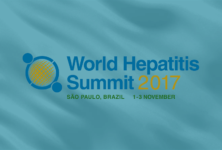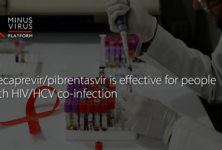Close to 60% of adults benefiting from point-of-care CD4 cell count testing at HIV testing sites, accelerated antiretroviral (ART) initiation and SMS appointment reminders were retained in care after one year, compared to just 44% of those receiving the standard of care (SOC) in Mozambique, according to findings from the Engage4Health study presented last week at the Conference on Retroviruses and Opportunistic Infections (CROI 2017) in Seattle.
The study also found that people who received the enhanced intervention were much more likely to be linked to care within one month of diagnosis. Over 90% of those who received the enhanced intervention were linked to care within one month, compared to 63% of those who received the standard of care. People who received the enhanced intervention were five times more likely to link to care on the day of diagnosis (RR: 5.7, (95% CI: 4.8-6.7) and twice as likely to have linked to care within one week, when compared to the standard of care group (RR: 2.0 (95% CI: 1.9-2.2).
Despite the considerable success of HIV programmatic scale-up in sub-Saharan Africa, timely linkage to care after HIV diagnosis and sustained retention in care have been identified as major weaknesses across the continuum of care. Barriers at each step of the continuum persist. Identification of scalable interventions to strengthen linkage to and retention in HIV care is critical for individual and population benefits of ART.
Findings show that less than half of HIV patients in Mozambique enroll in care within a month of their diagnosis. Among those who do enroll in care less than half are still in care 12 months later. Such low rates of linkage to and retention in care highlight the challenge of ensuring effective, long-term HIV treatment.
Led by ICAP, in partnership with the Center for Collaboration in Health and Mozambique’s Ministry of Health and funded by USAID, the Engage4Health study evaluated the effectiveness of a combination interventions strategy compared to the standard of care on the combined outcome of linkage to care within one month and retention in care at 12 months following HIV diagnosis. A subset of CIS participants received, in addition, non-cash financial incentives (CIS+FI).
The Engage4Health study was a cluster-randomised controlled trial conducted at ten health facilities from 2013 to 2016.
From April 2013 to June 2015 adults over 18 years of age newly diagnosed with HIV, not currently pregnant, or enrolled in HIV care or receiving antiretrovirals (ART) in the prior six months and willing to get HIV care at the diagnosing health facility, were enrolled from clinics in Maputo and the more rural area of Inhambane Province. Participants were followed for 12 months.
Of the 2004 (744, 493 and 767 in the CIS, CIS+FI and SOC arms, respectively), two-thirds of participants were female with a mean age of 34 years, half were married and approximately one quarter were unemployed. Participants were referred mainly from voluntary testing and counselling sites.
The standard of care at the time comprised laboratory referral for CD4 testing, returning for results in two to four weeks, and ART counseling at a separate clinic visit.
The CIS-FI cohort received up to three pre-paid cell phone cards equivalent to US 5 dollar in value, one for linkage within one month, the second for retention at six months and the third at 12 months.
Approximately 90% of participants were interviewed at one month and approximately 80% at 12 months.
The primary outcome, linkage to care within month and retention at 12 months, was 35%, 57% and 55% for the SOC, CIS and CIS-FI cohorts, respectively.
This breaks down to rates for those linked to care within one month as follows: 63%, 94% and 95% for the SOC, CIS and CIS-FI cohorts, respectively.
CIS and CIS-FI cohorts had similar very high linkage rates.
While the retention rates at 12 months remained similar for the CIS and CIS-FI cohorts there was nonetheless a considerable loss to follow-up across all groups: 56%, 42% and 45% were lost to follow up, respectively.
The unadjusted relative risk for the primary outcome compared to the SOC arm was RR: 1.6 (95% CI: 1.5-1.8) and 1.6 (95% CI: 1.4-1.8) for the CIS and CIS-FI cohorts, respectively.
For the CIS cohort there was a 20% improvement in retention at six months and 30% at 12 months compared to the SOC group.
In a sensitivity analysis with the primary outcome expanded from clinic of diagnosis to include any clinic the primary outcome rate was 46%, 70% and 68% for the SOC, CIS and CIS-FI cohorts, respectively. Increases were in the same proportion for all three groups. The unadjusted relative risk wa similar for both cohorts and was unchanged.
Dr. Lamb concluded that combination strategies improved linkage within one month plus retention at 12 months following HIV diagnosis by 50% to 60%.
However, this improvement was due primarily to the significantly enhanced linkage to care rather than changes in retention.
Financial incentives provided no additional benefit.
By Carole Leach-Lemens
Reference
Elul, B et al. A combination intervention strategy for HIV linkage and retention in Mozambique. 2017 Conference on Retroviruses and Opportunistic Infections (CROI 2017), Seattle, abstract 110, 2017.


 ПОИСК ПО САЙТУ
ПОИСК ПО САЙТУ  поиск по ресурсному центру
поиск по ресурсному центру 



